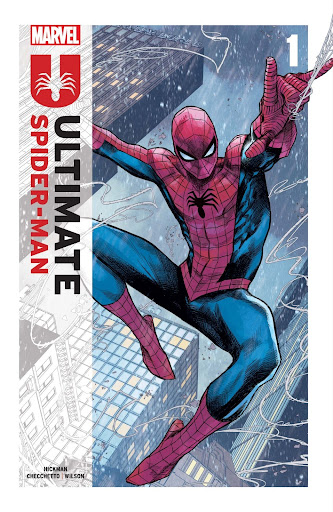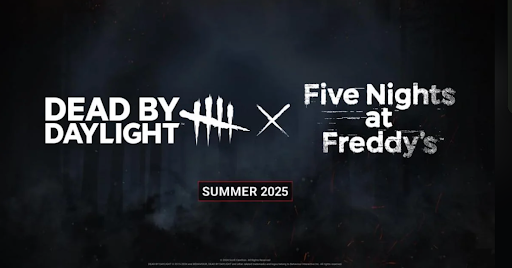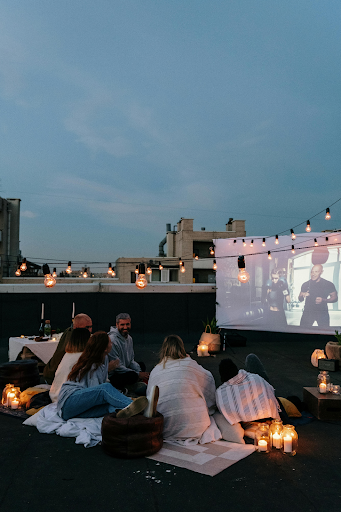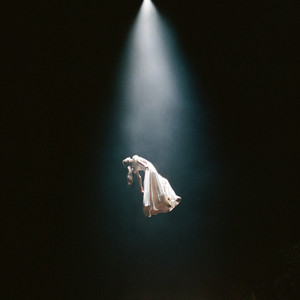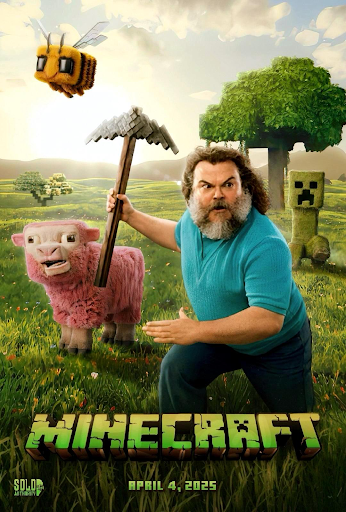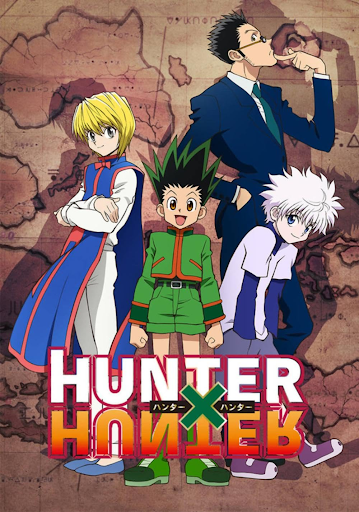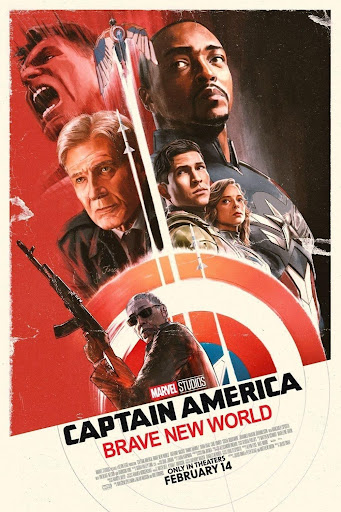The Witcher 3: Wild Hunt is a game I approached with much skepticism for the dumbest reason ever. Before its release in 2015, I was cautiously excited but ended up not buying it simply because people compared it to what was my favorite game ever, The Elder Scrolls V Skyrim. I don’t kid that the only reason I didn’t play this game was because I was skeptical it would top what I thought was the pinnacle of gaming at the time.
When I eventually got around to playing it, I finally understood all the hype this game received. Put simply, The Witcher 3 was the greatest game I had ever played at that point. Even as the years have gone by and other games have taken its throne, this game still remains at the peak of what gaming has to offer thanks to its incredibly rich writing, world, and characters.
When a free update for next-generation consoles was announced, I was ecstatic. With gameplay and quality of life improvements along with new weapons and armor, this was more than a mere update but a full-blown remaster being given for free for all returning players. Among the changes are better graphics and FPS, improvement to skill trees and combat controls, and two free armor sets and the armor from The Witcher Netflix series. One of the greatest games of all time was made even better with this update and I’m glad it was worth the wait.
In nearly every regard, Witcher 3 is a triumph that towers above nearly every game that has come before or since.
This game has an absolutely spectacular soundtrack. It’s incredibly unique, mostly relying on folk instruments that help to enhance the atmosphere of the game by keeping the music in line with what the common folk would be hearing instead of a bunch of grand orchestral themes blasting through your eardrums. Of course, there are times when grand orchestral music is necessary such as in big battles or in the Blood and Wine expansion, but as a whole, the music is perfectly tuned to fit every situation.
There is also an absolutely beautiful Ballad, titled The Wolven Storm, that is performed in an inn about one-third of the way through the game. It is simply one of the best songs ever written into a video game. It’s a beautiful homage to the relationship between the series protagonist, Geralt of Rivia, and his love, Yennifer of Vengerberg, and perfectly encapsulates the tumultuous but enduring relationship between these two individuals bound by fate in this slow and intimate song.
In a broader sense, the game just sounds amazing. The sound design here is legitimately on the level of a Rockstar game. Whether it be the sounds of a bustling city, a hissing monster, or trees blowing in the wind, this game does a great job of immersing you through its audio.
The world, even eight years later, is stunningly beautiful. From the grimy wetlands of Velen, the bustling streets of the free city of Novigrad, to the luscious green hills of Toussaint, this game offers incredibly diverse environments that are all jaw-dropping to look at. Even to this day, I am taken aback by how great this game looks. The art design reflects the world of Witcher perfectly by showing its beauty but also that there is darkness beneath the surface.
Character designs are also top-notch with the main cast all having some of the best designs in all of gaming. I seriously cannot get enough of Geralt’s leather and chainmail armor or Triss and Yennifer’s awesome outfits. Fantasy games need to take a few notes from The Witcher instead of having gaudy ugly knight armor all the time.
The one issue with the game’s presentation is the user interface. It’s just simply not good. Navigating through menus is just a massive chore and there are just way too many screens to access. It definitely needed some streamlining and tweaking in this regard. The HUD in gameplay is also ugly. It can get in the way of immersing yourself in this world, so I recommend going into the menus and reducing it as much as you can while still keeping it playable.
With the current generation update, the game runs butter smooth at 60fps with minimal glitches and technical hiccups. I will say, however, twice during my playthrough my save data got corrupted which resulted in me having to go into the menu and delete the save and load a previous one. This wasn’t much of an issue because the game has multiple autosaves and it saves pretty often. This hiccup is a massive step up from my playthroughs on both PlayStation 4 and Xbox One which both nearly destroyed my consoles. When I first played it on PS4 my saves would constantly be corrupted to the point where I’d lose multiple hours of progress. On my Xbox One, as long as the game was installed, my console would constantly crash to the point where I couldn’t play for more than 20 minutes sometimes without it combusting and making weird noises.
The gameplay seems to be a very contentious aspect for a lot of people, but I think it’s solid for what it is. Yes, there are fairly significant issues, but most of the time they aren’t too bothersome and I’m willing to look over some of the major issues because it mostly acts as a vessel to experience this world and story rather than being the main focus.
The traversal is easily the worst aspect of the gameplay. While out of conflict, Geralt can often be hard to control with precise movements, but the biggest issue is with horseback riding. It is so clunky and annoying sometimes that I just opted to run on foot to my destination. Whenever you summon your horse, Roach, you have a 50/50 chance of her spawning in the strangest, most inopportune spot imaginable, especially if you are in a town. Along with that, controlling her is just terrible sometimes. The lack of precise movement with Geralt is only amplified when you ride on Roach, and it doesn’t help that she gets stuck on the dumbest things and just refuses to go.
The minimap is also really poorly designed. The directions it gives you to get to your destination are just mind-bogglingly awful. There are times when it directs you to go off the road only to correct itself once you’ve already strayed off the path and others where it literally just has you go the wrong way. Another thing that’s annoying is how it tracks how far you are from your location, but it doesn’t account for how far you will travel on the path. Instead, it just calculates how far you are if you go to your location in a straight line. You would think this would be improved, but it was equally as bad in their next game, Cyberpunk 2077, which came out five years after this game.
A lot of criticisms have been levied against the combat because it feels floaty and hard to control but I strongly disagree. In fact, I think this is one of the best real-time combat systems in any RPG. The combat has so many options and ways to approach it that it’s honestly really impressive considering there are no choices in class like in many other fantasy games like The Elder Scrolls and Dragon Age.
Geralt has three major skill sets to account for, swords, signs, and potions. Despite having a very large skill tree, the game only lets you use up to 12 perks at once. This means you have to pick and choose which perks you will use. You could equally allocate skills from each tree or you can focus just on one of the three. I love the flexibility this provides because it keeps you from being overpowered and also allows you to customize and experiment with your build whether you want to slash enemies to bits or burn your foes with the Igni sign.
The actual mechanics in fights are really good too. Sure, the combat could feel a tad more weighty and impactful, but I like how Geralt almost feels like a feather in combat. This guy is one of the greatest swordsmen in the world so it feels right that his movement almost feels like you are dancing. It makes combat feel like this satisfying ballet of death. You really get the feel that Geralt is a legendary swordsman that he has come to be known as.
Geralt’s magic signs are also great at mixing up combat and keeping it from getting stale. There’s the previously mentioned Igni which spews a blast of fire at your enemies. Aard is a telekinetic push that forces enemies back or stuns them. Axii can temporarily stun and confuse enemies. Quen will shield you from incoming damage. Yrden slows down enemies within its range and keeps specters from teleporting away. Along with all these signs are alternate modes for each which helps to make them feel even more versatile.
There is one aspect to the combat that just doesn’t work which is the hand-to-hand fistfights. These are relatively sparse but you will encounter them from time to time and they are just terrible. You know how I said combat felt like a ballet of death? Well when it comes to fists, it feels like all that is lost in favor of a dreadfully awful brawling system that’s more irritating than fun.
Oh wait, there’s more. This game has a major minigame that has now become a meme for how addicting it is. Gwent is single-handedly the best-designed minigame in any video game. It is so well thought out that it could be its own game all on its own … Oh, wait it is. It is so addicting and satisfying that I literally just avoid playing it or else I will spend half the game challenging strangers to play me in Gwent.
Another major part of the gameplay is picking dialogue choices. While it isn’t like games such as Knights of the Old Republic and Fallout New Vegas, It doesn’t need to be because Geralt is an established character with eight books and two games’ worth of history behind him so the dialogue and choices need to make sense for the character. Despite the limitation of an established character, this game has a really impressive choice and consequence system where you can feel the ramifications of your decisions throughout the game.
The writing and story in this game is almost second to none. While there were well-written RPGs before this, Witcher 3 elevated the standard for writing in this genre, but it sadly hasn’t been matched. This was one of those games that should have been a monumental stepping stone for the industry, but unfortunately, other games took all the wrong lessons from this game by superficially and lazily copying some of the game’s mechanics without understanding why people like this game. Assassin’s Creed Odyssey in particular tried to ride off the hype of Witcher 3, but it didn’t understand at all why this game is so loved.
The story follows Geralt of Rivia, a mutated monster slayer (AKA a witcher), who is tasked to track down his adopted daughter, Ciri, with his longtime love, Yennifer.
This game presents a world that never operates in complete black and white. That doesn’t mean the game doesn’t take a stance on what’s good or bad, but it also realizes that humans are complicated creatures that can’t be defined by a simple moral binary. Across the entire series, the writers display a huge sense of empathy for all their characters. Again, bad people are clearly bad people, but the game rarely has people who are bad just because they feel like it, and even when they are, they are portrayed as some of the most disgusting and evil human beings to ever live to the point where even Geralt, who was conditioned to be emotionless and neutral, can’t help but show his disgust.
The story is admittedly a little hard to get into as a new fan but it’s not really the game’s fault because this is essentially the Avengers Endgame for the Witcher universe. Despite the initial confusion, this game does a great job of catching you up on everything you need to know before jumping into the thick of things with the story. Would you be better off reading the books and playing the other games? Yes, but this game gives you enough of the context you need to get invested in the story.
The story is technically separated into three different acts but acts two and three are much shorter than act one so it’s better to say that the story comprises six major arcs. I won’t lie, not every arc is created equal, but even the worst one still towers above most of the competition. The five arcs that comprise acts one and two are excellent. This structure makes it really easy to get caught up with this world if you are new because it brings you to its many different corners and shows how different they are. The isles of Skellige feel completely different from the bustling streets of Novigrad.
The White Orchard arc is a nice little introduction that will introduce you to the basics of the socioeconomic status of the world of the Witcher along with catching you up with Geralt after the events of Witcher 2. It’s a neat little arc and is great at showing how the world of The Witcher operates.
When you arrive in Velen, the game really takes off. While it’s a pretty early detour from the main plot, the story in this arc is so tragic and compelling that you can’t help but notice (except for that one time where you have to retrieve someone’s pet goat). This arc takes the game to extremely dark places with one of the most disturbing missions you will ever see in a video game. It puts into perspective just how brutal this world can be. There aren’t always happily ever afters. It is also great at putting Geralt’s relationship with Yennifer and Ciri into perspective by seeing this heart-wrenching family tragedy unfold.
Novigrad is just a tad bit lighter, employing slightly more comedic elements along with reintroducing more of the returning characters such as Triss Merigold, Dudu, Dandelion, and Sigmund Dikstra. This arc is also much more political as you have to navigate numerous different sides of the political landscape from helping save people from persecution and taking on a powerful crime boss with the help of the rest of the city’s underworld to trading favors with the king of the north. There is a lot of diversity in this arc and after the extremely dark Velen section, this is a nice reprieve while also taking itself seriously and keeping consistent with the tone of the series.
Skellige is on the weaker end of the spectrum but it’s still pretty strong. If you’re rushing the story then this is a pretty forgettable section considering what comes next in the story, but if you complete the major side quests, it’s a lot more satisfying. There are two great missions where you help the children of a powerful Jarl which eventually converge to a fun and satisfying murder/conspiracy as a new king is chosen. It also contains one of the best side quests in the game relating to Yennifer that is just perfect and perfectly encapsulates everything that is great about this series and universe.
Act two in Kaer Morhen is fantastic. Interacting with the rest of the Witchers leads to some of the funniest and saddest moments of the whole game and it’s nice to see Geralt and Yennifer’s bond grow even stronger here. Along with that, this arc culminates in an incredible final battle that completely upstages The Long Night in season eight of Game of Thrones with a similar but far better battle.
The third and final act of the game is where this game fumbles a bit. It is painfully obvious that this section was rushed so that the developers could ship this game out on time. I wouldn’t call it bad, but it’s definitely flawed and it hurts the overall delivery of the story. Important series characters are shoved to the sidelines or don’t get proper closure and there are just an abundance of convenient coincidences that make it clear they didn’t have time to flesh out this section. Despite its shortcomings though, the final act still delivers where it counts with the core relationship between Geralt, Yennifer, and Ciri.
The side quests are of some of the highest quality you will ever find in a game. Each of them is absolutely perfect and makes this world feel so much more alive and lived in. Some even directly affect the story’s outcome from slight variations in the final cutscene to completely different endings. The ones that relate to the main cast are very clearly the standouts here, but I can’t think of a single side quest that is bad, except one.
In the third act, the finale of a long chain of side quests that started in act one will become available and it is just awful. The entire thing feels completely rushed and contrived and ends with one of the worst cases of mischaracterization I have ever seen. This character is so thoroughly butchered with just one thirty-second scene that it makes the final season of Game of Thrones look pretty good. It’s clear this mission suffered from them having to rush the final act which is unfortunate because this quest had a ton of buildup throughout the game despite merely being a side quest.
All the issues with the third act almost become irrelevant thanks to the mind-blowingly incredible downloadable expansions, Hearts of Stone, and Blood and Wine. Both of these are the best expansions to any game ever. Their stories are so rich that they not only match the main story but exceed it in many ways.
Hearts of Stone is a perfect 10-hour story that explores the life of an affluent man named Olgierd Von Everec who acts as a perfect foil to Geralt. Witchers are often thought to be emotionless machines whose only purpose is to kill monsters. To see a man who truly has a heart of stone gives Geralt a perfect contrast but also an interesting conundrum. This shows many sides of both Geralt and Olgierd and has great diversity in its missions. One will have you pulling off a heist, another will see you attending a wedding while possessed by a rambunctious ghost, and one will have you exploring a world of pain and grief from a forgotten lover. Hearts of Stone also has one of the best villains you will ever see in a video game. He is absolutely terrifying especially when you learn more and more about this immensely powerful being. It may be called Hearts of Stone but it’s all about showing there is only one person with a heart of stone and it certainly isn’t Geralt or Olgierd.
Blood and Wine is equally as good. While it’s not as thematically resonant as the first one, this expansion provides a great and intriguing story that gives a nice sendoff to Geralt of Rivia. This will take you to the Mediterranean-inspired land of Toussaint, filled with wine vineyards and a much more vibrant color palette. Here, you will be investigating a series of murders which is quickly revealed to be a winding conspiracy across the duchy, oh, and there are vampires. This winding mystery is engaging and riveting culminating in an incredibly creative and fun finale. The depiction of vampires is also one of the most interesting I’ve ever seen. They delve extensively into the culture, hierarchy, and even philosophy of these feared and despised beings. The culture of Toussaint is also a stark contrast to the areas of the main game which makes it remarkably refreshing, especially since you’ve been playing for 75-100 hours at this point.
I could talk all day about every little detail of this game because it is so good. It’s rare to see a game so exquisitely designed like this where nearly every single facet of a 100+ hour game is masterfully crafted. The Witcher 3 is the best Western RPG ever made with an epic and emotionally resonant journey that will have you feeling like a part of you is left behind once the credits roll the final time. This is an absolute must-play for any gamer and I cannot recommend it enough.
Score: 10/10



